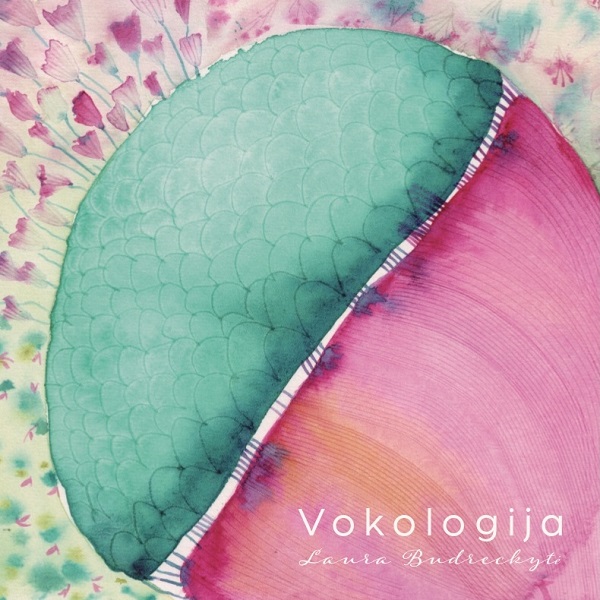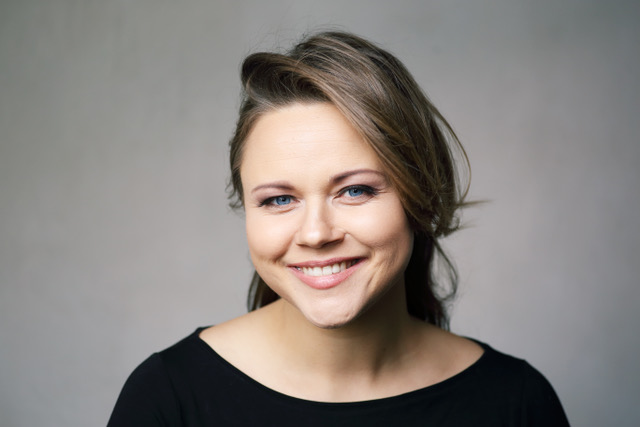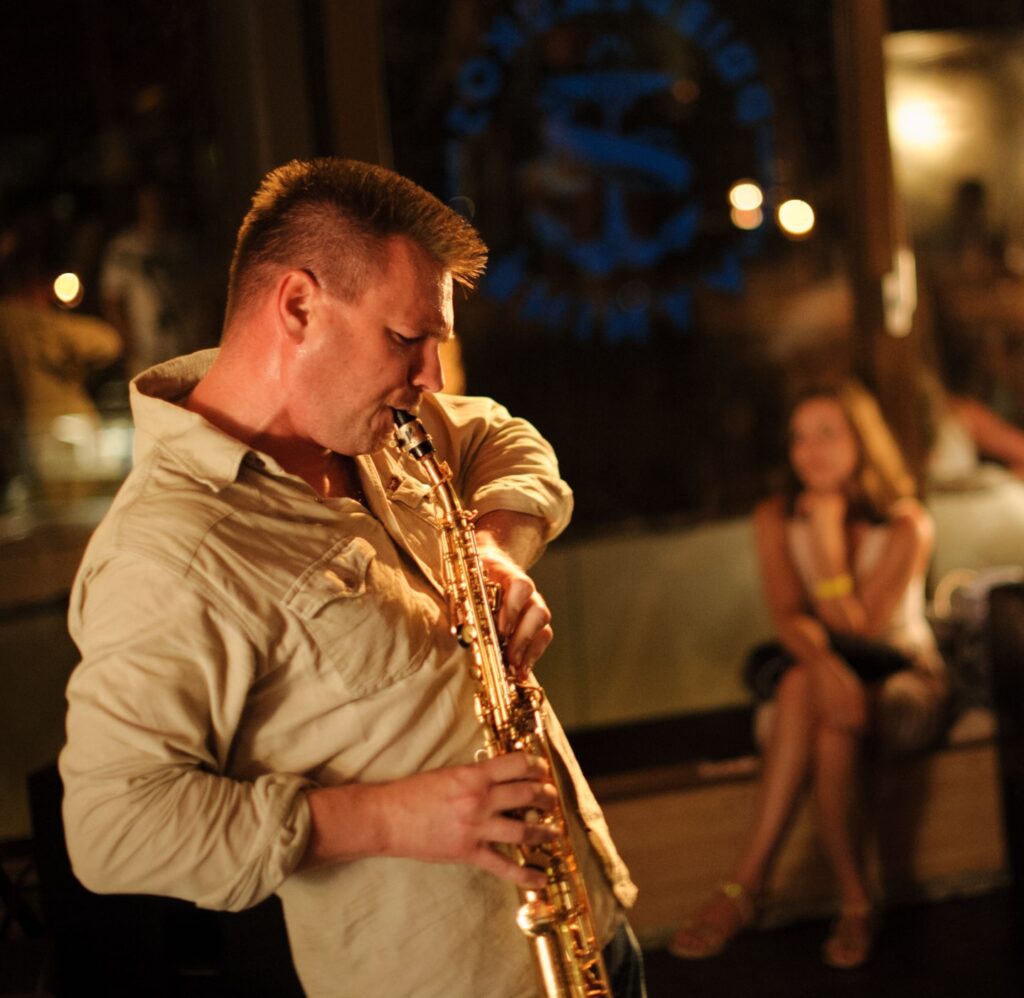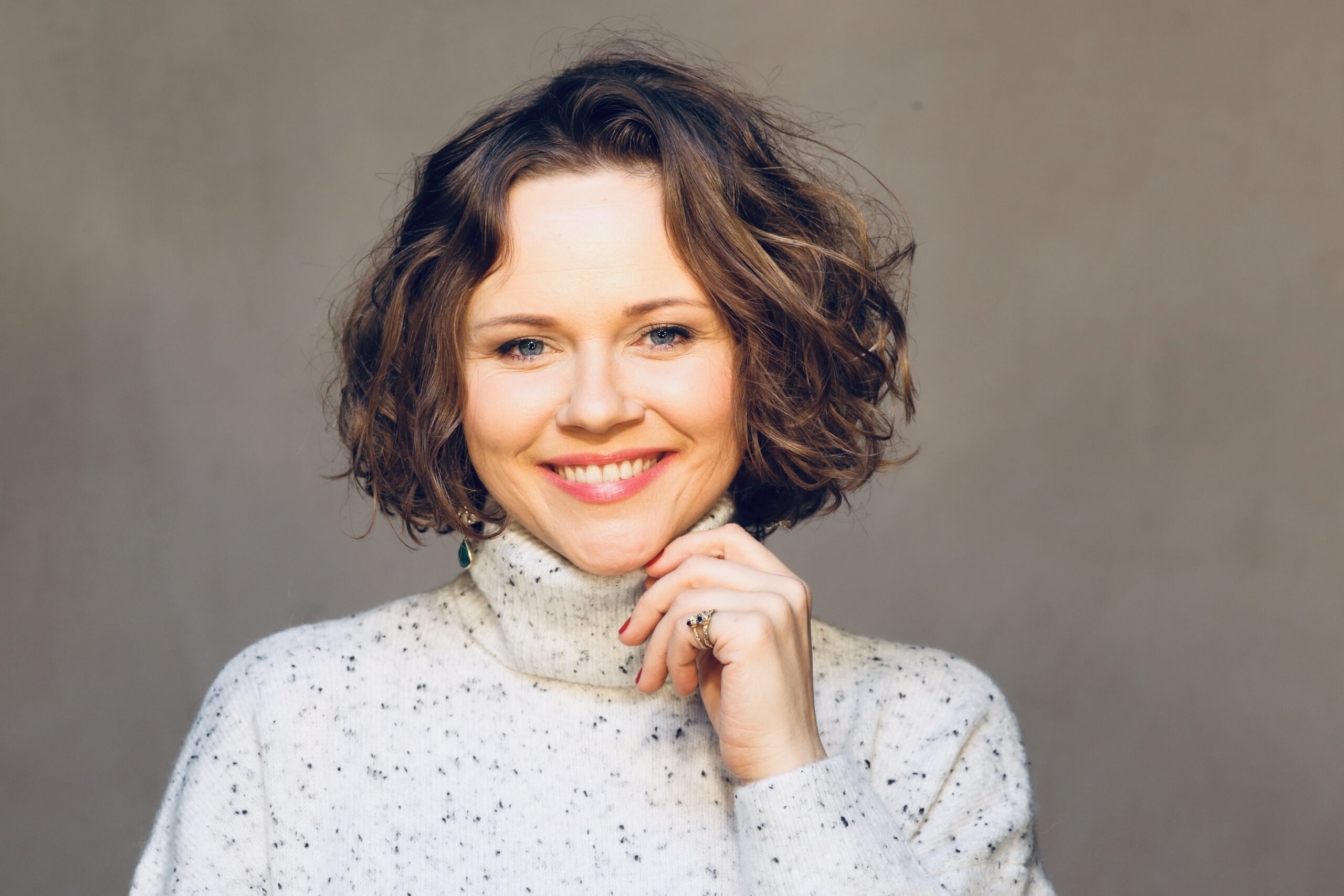2020年、リトアニアのシンガー・ソングライターのプルナマシ・ヨガマヤ(Purnamasi Yogamaya)を知り、その素晴らしさに惚れ込み、リトアニアという国に興味を持った。その後、彼女と交流をもつサックス奏者のレミス・ランチース(Remis Rancys) の作品を知ることができたが、それ以降は、次なる作品になかなか出合うことが出来なかった。そんな折、ふいにParaphernalia Recordsのディレクターから教えてもらったのがこのラウラ・ブドレツキテ(Laura Budreckyte)のアルバム『Vokologija』だった。一聴して、そのクオリティーの高さに驚いた。リリカルで凛とした雰囲気のピアノ・トリオの演奏をバックに、滋味深いスポークン・ワードを乗せるスタイルがなんとも心地よく、今まで聴いたことがない新鮮な音楽だった。“Vokologija”とは“ Vocology ”、つまり発声学を意味する。本作は、自身のライフワークである音楽療法を取り入れた発声の課題のためのアルバムだという。聴けば聴くほどその魅力が深まるばかりのこのアルバムは、一体、どのような思いで作られて、どのような背景から生まれたのか、その鍵を見つけるためにラウラ・ブドレツキテに話を聞くことにした。
Text by 山本勇樹 Yuki Yamamoto (Quiet Corner)
Edit by 宮本剛志 Takeshi Miyamoto|山口隆弘 Takahiro Yamaguchi(OTOTSU編集部)

ラウラ・ブドレツキテ『ヴォコロギヤ』
2023年01月25日発売
Paraphernalia Records
PAPH-3
CD
ライナーノーツ: 山本勇樹 (Quiet Corner)
―あなたの生まれたビルシュトナスはどのような街ですか? またあなたにとってどのような存在ですか?
ラウラ・ブドレツキテ(Laura Budreckyte)※以下省略
私は、ミネラルウォーターとサナトリウムで知られるリトアニアの小さなリゾート地、ビルシュトナスで生まれ育ちました。人口3000人ほどの場所です。40年以上にわたって開催されているリトアニアで最も古いジャズ・フェスティバル、ビルシュトナス・ジャズ・フェスティバルがあることから、ジャズのメッカとしても知られています。私は地元の音楽学校でピアノを学び、合唱団で歌っていました。ビルシュトナスの高校を卒業した後、2008年にヴィリニュスのリトアニア音楽演劇アカデミーでジャズ・ヴォーカルを学びました。数年前、ビルシュトナスのグローバル文化大使に任命されました。今でもコンサートや音楽療法のクラスを開催するためによく行っていて、私の両親もそこに住んでいます。
―What kind of town is Birštonas where you were born? Also what kind of existence or place is it for you?
I was born and grew up in a small Lithuanian resort – Birštonas, which is famous for its mineral water and sanatoriums. My hometown has almost 3000 people. It is known as jazz mecca because of the oldest Birštonas jazz festival in Lithuania, which is going over 40 years. I’ve studied piano at a local music school and sang in a choir. After finishing Birštonas high school, in 2008 l went to study jazz singing at the Lithuanian Academy of Music and Theatre in Vilnius. A few years ago, l was invited to be the culture ambassador of global Birštonas. Until today I’m often going there organizing concerts and music therapy classes. Also, my parents live there.
―音楽を始めたのはいつからで、それはどのようなきっかけでしたか?
子供の頃から音楽学校でクラシック・ピアノを習っていました。学生時代から、地域や学校の様々なイベントで歌ってきました。リトアニア民謡やポップス、ジャズを演奏するコンクールにも参加したことがあります。2008年にLMTA(リトアニア音楽演劇アカデミーの略称)でジャズ・ヴォーカルを学び始め、修士号を取得しました。そして2020年には音楽療法士としての修士号も取得しました。現在、私は頻繁に様々な地域に赴き、音楽療法の分野で向上心を持って取り組むとともに、国際的なジャズ・インプロヴィゼーションの場にも参加しています。
―When did you start to play music and how did it start?
I was studying classical piano in music school since I was a kid. I have been singing since school at various community, schools’ events. I have participated in competitions, where l performed Lithuanian folk songs and pop – jazz music. In 2008 l have started to study jazz vocal in LMTA, where did my master’s degree. In 2020 did my second master’s degree as a music therapist. Currently l travel quite often, continue to improve in the field of music therapy, going to international jazz improvisation trainings.
―楽器や作曲などは、どのようにして学びましたか?
リトアニア音楽演劇アカデミーで勉強していたときに、作曲と編曲のレッスンを受けました。私はよく他のミュージシャンとコラボレーションし、一緒に創作しています。いつも、作曲を始める前に、テーマやメロディーが現れるまで即興で演奏しているんです。ヴィティス・ニヴィンスカス(Vytis Nivinskas)という私の夫もミュージシャンで、リトアニアでよく知られたジャズ・ダブルベース奏者なんです。彼ともよく一緒に演奏し、音楽の創作をともにしています。
―How did you learn to play an instrument or compose music?
I had composition and arrangement lessons when I studied at the Lithuanian Music and Theatre Academy. I often collaborate with other musicians, and we create together. Usually, I am improvising before I start to compose, until a specific theme or melody emerges. My husband is also a musician, Vytis Nivinskas, well-known jazz double bass player in Lithuania, we often play with him and create music together.
―CinAmon(シナモノ)はどのような経緯で結成されたのですか?
Vytis Nivinskas(ヴィティス・ニヴィンスカス)と一緒に、私たちはCinAmonoというグループを始めました。9年前のことです。当初私たちはヴォーカルとダブルベースのデュオとして活動していたのですが、その後、他のミュージシャンとも一緒に演奏するようになりました。私たちは2枚のアルバム(CDとレコード)をリリースしました。これらのアルバムのレコーディングで、リトアニアで最も優れたサウンド・ディレクターであるアレクサンドラ(Aleksandra)&ヴィリウス・ケラス(Vilius Keras)とコラボレートしました。彼らはグラミー賞にもノミネートされたことでも知られています。また、CinAmonoでは、Simonas Šipavičius(シモナス・シパヴィチウス), Richardas Banys(リハルダス・バニース)、Jan Maksimovič(ヤン・マクシモヴィッチ)、Tuomas Räsänen(トゥオマス・ラサネン)、Žygimantas Bačkus(ジギマンタス・バチコス)、Domantas Razmus(ドマンタス・ラズムス)といったリトアニアの有名なジャズ・ミュージシャンとも共演しました。
―How did you form CinAmono?
We created CinAmono group together with Vytis Nivinskas. It was 9 years ago. We’ve started to perform as a vocal / double bass duo. Later we invited other musicians to join us. We released two albums (CD and Vinyl). When we were recording those albums, we have collaborated with one of the best Lithuanian sound directors, Aleksandra and Vilius Keras, who were nominated for the Grammy Award with their recordings. Also, in CinAmono we played with young but well-known Lithuanian jazz musicians: Simonas Šipavičius, Richardas Banys, Jan Maksimovič, Tuomas Räsänen, Žygimantas Bačkus and Domantas Razmus.
―どのような経緯で音楽(ボイストレーニング)を教えることになったのですか?
リトアニア音楽演劇アカデミーで学び始めた1年目から、私は歌の教師として働いていました。最初は子どもたちを教えていましたが、次第に大人たちにも教えるようになりました。私が情熱を持っていることは、人々が自分の声を発見し、習得し、その力を感じ、使うことを教え、手助けすることです。今、私はヴィリニュスの中心部にスタジオを持ち、そこでヴォコロギヤ・メソッドによる歌と音楽療法のレッスンを行っています。*ヴォコロギヤ・メソッド : 発声方法
―How did you come to teach music (voice training)?
From the first year of my studies at the Lithuanian Music and Theatre Academy I have started working with people as a singing teacher. At first with children and later – with the adults. My passion is to teach and help people discover their voice, master it, to feel it’s power, use it as a resource. Now l have studio located in the center of Vilnius, where l teach singing – music therapy lessons by Vokologija method.
―あなたの音楽性に影響を与えた音楽家、または作品を教えてください。
私は創作活動のある段階でボビー・マクファーリンに影響を受けたと思います。ボビーがマスタークラスを行うというエストニアのタリンに行ったんです。そこでこの素晴らしいパフォーマーに会うことができました。また、私はグループでの即興に魅了されていて、それはサークル・シンギングというメソッドです。サークル・シンギングはオスロでリアノン(Rhiannon)のもと学びました。また、ともに活動している地元のミュージシャンからも触発されています。
*サークル・シンギング:ボーカルジャム
―What musicians or albums have influenced your musicality?
I think that at some stage of my creation I was influenced by Bobby McFerrin. I went to Tallinn (Estonia), where Bobby did his masterclass. That’s how I met this brilliant performer. I am also fascinated by group improvisation, it’s a method call – Circle singing. I studied Circle singing in Oslo with Rhiannon. I am also inspired by local musicians which I’m work with.
―では音楽以外で、例えば映画や文学(もちろんそれら以外でも)あれば教えてください。
読書と映画鑑賞がとても好きです。今は主に人間の感情についての本や心理学、そしてそれらと身体との関連性についての専門書を読んでいます。また、私はリトアニアの国営放送で、「Teramuzika」というラジオ番組の司会を務めています。この番組は、音楽と芸術療法に関する番組です。そういうこともあって、最近の私の読書のほとんどはこのラジオ放送に関連したものなんです。 つい最近読んだ小説は、マリーナ・ステプノヴァ(Marina Stepnova)の『Garden』ですね。日本の映画も流れや深み、感性が独特で好きです。それから、宮崎駿監督のアニメーションを子供たちと一緒によく見ています。

―Then, please tell me about any non-music, for example, film or literature (other than those, of course). I would like to ask you a question about this album „Vokologija?
I like very much to read and watch movies. Currently, I mainly read professional literature about human emotions, psychology, and their connection with the body. I am hosting an original radio show on Lithuanian national radio called – Teramuzika. It is a radio broadcast about music and art therapies. Currently most of my reading is related with the radio broadcast. The last novel I read was Marina Stepnova’s Garden. I also like Japanese films, they are unique in their flow, depth, and sensitivity. We often watch Japanese animation with our children created by Miyazaki.
―まず本作を録音することになったいきさつは?
私は音楽療法を取り入れた発声の課題のためのアルバムを作るというアイデアを持っていました。それで偉大なジャズ・サックス奏者、作曲家、編曲家のヤン・マクシモヴィッチにコラボレーションしてほしいと提案したのです。私はテーマや音楽のアイデアを彼に提示し、彼はスケッチや音楽の一片、様々にアレンジされた和声のシーケンスを用意しました。そして私は、ヤン・マクシモヴィッチが作成した楽曲やスケッチをもとにテキストやメロディを作って、インストゥルメンタルを録音しました。最初はそれぞれのスタジオでレコーディングを行い、アイデアを練り、音を探求し、それから会って一緒に作り上げたんです。アルバム『Vokologija – know yourself by voice』は、アーティストの権利団体であるAgataから一部支援を受けており、そのことにとても感謝しています。また、このアルバムが初めてフィジカルとして日本で発売されることを嬉しく思います。
―First of all, how did you come to record this album?
I had an idea to create an album of voice tasks integrating music therapy. I offered collaboration to great, well-known jazz saxophonist, composer, and arranger Jan Maksimovič. I have presented themes, musical ideas to my colleague, and he prepared sketches, musical episodes, variously arranged harmony sequences. Then I created texts, melodic lines, recorded instrumentals on musical compositions/sketches created by Jan Maksimović. At the beginning we made recordings each in our own studios, developed the idea, searched for the sound, then we met and created together. The album Vokologija – know yourself by voice was partially supported by the artists’ rights organization Agata, for which I am very grateful. I am happy that this album will be released physically in Japan for the first time.
―アルバムのコンセプトと、それに至った理由を教えてください。
人々に歌を教える中で、声を理解することがヴォイストレーニングにとどまっていることに気づきました。私は常々、人の声というのは魂の鏡のような特別なものだと感じています。声との関係、その人にとっての声の意味を探ってみたいと思ったのです。私の願いは、自分の家で、誰もが声について学び、エモーションを感じ、勇気を出すことを練習し、想像力を育む旅に出ることができるツールを作りたいと願っていたんです。私の姉で画家のインドレ・ブドニキエネは、このアルバムの日本での発売のために特別にジャケット・アートを制作してくれました。彼女は『ヴォコロギヤ』の音楽からインスピレーションを得て、この素晴らしい抽象的な絵を描いたんです。
―What is the concept of the album and why did you come up with it?
While teaching people to sing, I noticed that understanding the voice is limited to voice training exercises. I always felt that a person’s voice is something special, like a mirror of his soul. I was interested in exploring the relationship with your voice, the meaning of the voice for a person. My wish was to create a tool for everyone, in their own home, can embark on a journey of learning about the voice, feel emotions, practice courage, develop imagination. My sister, painter Indrė Budnikienė created a cover specially for this album’s release in Japan. At first, she got an inspiration from music of Vokologija album and then she created this wonderful abstract picture.
―Jan Maksimovič(ヤン・マクシモヴィッチ)について教えてください。また彼とはどのような経緯で知り合ったのですか?
ヤン・マクシモヴィッチは、リトアニアの著名なジャズ・サックス奏者であり作曲家です。卓越した演奏技術を持つとともに、直感や感性が際立った音楽家なんです。もともと彼は私の先生の一人でしたが、後に一緒にステージに立つ仲間となりました。

―Please tell me about Jan Maksimovič. Also how did you get to know him?
Jan Maksimovič is a well-known Lithuanian jazz saxophonist and composer. Distinguished by his exceptional playing technique, intuition, and sensitivity. He used to be one of my teachers, but later we became stage colleagues.
―あなたにとってJan Maksimovičはどのような存在であり、彼とのコラボレーションはどのような結果を生み出しましたか?
ヤンはリトアニア音楽演劇アカデミーの先生の一人だったんですが、その後ジョン・コルトレーンを演奏するプロジェクトで共演したことがきっかけで、彼をCinAmonoに誘いました。私たちは人間的にも仕事の上でも素晴らしい関係を築けています。
―What person is Jan Maksimovič for you? What kind of results did your collaboration with him?
Jan was one of my teachers at the Lithuanian Music and Theatre Academy, later I sang with him in the John Coltrane project, then we invited him to join CinAmono. We have a nice interpersonal and professional connection.
―収録された曲は、いつ頃に、どのような環境の中で書かれたのですか?
曲は2022年の春に、夫と一緒に立ち上げたBass trapスタジオで録音しました。また、作曲の一部はヴィリニュスのヤン・マクシモヴィッチのスタジオで制作されていました。私たちは2つの異なる場所で制作していたのです。
―When and under what circumstances were the songs written?
The songs were recorded in the spring of 2022. In the Bass trap studio, which I set up with my husband. Some of the compositions were also created in the studio of Jan Maksimovič in Vilnius. We had worked in two different places.
―リズム、ハーモニー、旋律に伝統音楽からの影響はありますか?
―『Vokologija』は、リトアニアのフォークロアとワールドミュージックに影響されていると思います。
―Are there any influences from traditional music in the rhythms, harmonies, or melodies?
I think that Vokologija album is influenced by the elements of Lithuanian folklore and world music.
―サウンドのアレンジメントの作業はどのように行われましたか?
ミキシングとマスタリングはヤン・マクシモヴィッチが彼のスタジオで行いました。ヴォーカルのレコーディングは、私のスタジオで私が行っています。
―How was the work of sound arrangement done?
Jan Maksimovic did mixing and mastering in his studio. I did the voice recordings by myself at my studio.
―この作品は心の中のパーソナルな部分と、大自然の壮大な部分の両方を感じ取ることができました。その点についていかがでしょうか?
私たちは二人とも非常に繊細な人間で、音楽による感動体験は特に重要だと思っています。私は音楽の感動を信じていて、音楽は自分自身や自分の軸とのつながりを作り、安らぎを得、さよならしたい経験を手放すためのまっすぐな道だと思うのです。
―This album was able to feel both the personal side of the heart and the grandeur of the wilderness. What do you think about that?
I think that we are both quite sensitive people, and the emotional experience of music is especially important to us. I believe in the emotional impact of music, I think that it is a straight path for a person to create a connection with himself, his axis, find peace through music and let go of experiences that he wants to say goodbye to.
―あなたの声と各楽器のバランスも良く、音色も自然で心地よかったです。録音やミックス作業でこだわったことがあれば教えてください。またレコーディング作業で印象的なエピソードがあれば教えてください。
このアルバムは、ヤンと一緒にお互いを完全に信頼して書きました。時には一緒に、時には別々に、1曲ずつ録音していきました。私たちは何度も曲を聴きながら、音楽的なアクセントを加えていきました。 ヤン・マクシモヴィッチが音楽のスケッチを録音し、私は彼の音楽に声と歌詞のメロディーを乗せていったんです。
―Your voice and each instrument were well balanced, and the tone was natural and pleasant. Please tell me were you about in the recording and mixing process? Also, please tell me about any impressive episodes in the recording process.
We wrote this album together with Jan with completely trusted of each other. We recorded one composition at a time, sometimes together and sometimes separately. We added musical accents to the pieces by listening to them many times. Jan Maksimovič recorded and electronically created musical sketches, l created the melodies for the voice and lyrics on his music.
―リトアニアのジャズ・シーンはあなたにどのような影響を与えていますか?
様々なジャズのスタイルを歌ってきた経験が、独自の表現をするための技術的な基礎になったのだと思います。私はRemigijus Rančys (Remis Rančys)とも集中的に演奏していましたし、The Schwingsや他のグループでは昔ながらのスウィングを歌っていました。また、ワールドミュージックのプロジェクトで歌った経験は、フォークロアと即興のつながりを発見する機会となりました。CinAmonoのオリジナル曲は、リトアニアの古典的作家の詩や私の詩を使用しているので、ポエティック・ジャズと称されているんです。
―How does the Lithuanian jazz scene influence you?
First, I think that my experience in singing music of different jazz styles provided a technical basis for a unique expression. I performed intensively with Remigijus Rančys and sang swing in the old-fashioned way with The Schwings and other groups. Also singing experience in world music projects gave me the opportunity to discover the connection between folklore and improvisation. Original music by CinAmono is described as poetic jazz because we are using the poetry of classic Lithuanian writers or my lyrics.
―最近、日本ではPurnamasi YogamayaやRemis Rančysといった音楽家の作品が知られるようになりました。SNSやサブスクリプションの影響もあってリトアニアの音楽家が身近になってきていると思います。それについていかがですか?
そうだと思います。オンラインでのつながりやコミュニケーションなければ、タケシ(訳者注:Paraphernalia Recordsの元ディレクター)と知り合うことも、日本で『ヴォコロギヤ』をリリースする機会もなかったと思います。リトアニアは小さな国ですが、インターネットのおかげで世界に知ってもらうことができるんです。
―Recently, the works of Lithuanian musicians such as Purnamasi Yogamaya and Remis Rančys have become known in Japan, and I think Lithuanian musicians are becoming more accessible by social networking and subscriptions. Has the development of the Internet changed anything about music in your country?
I think so. l would probably never have had the chance to meet Takeshi and release Vokologija album in Japan if not online connection and communication. Lithuania is a small country and sometimes only thanks to the internet, we could be seen by the world.
―最後に私の感想です。あなたの音楽を初めて聴いた時から、高度な技術と、それが生み出す奥深く美しい世界観に魅了されました。私は残念ながらリトアニア語を聞いて理解できませんが、あなたの声はどこか懐かしく、心地よさを覚えます。また想像力を高めてくれます。ぜひ、実際にその声を聴くことができる日を楽しみにしています。
美しく感動的な言葉をありがとうございます。ほんの一瞬でも、誰かの幸福に貢献できることを嬉しく思います。
―Finally, here are my impressions. From the first time I heard your music, I was fascinated by your advanced technique and the profoundly beautiful worldview it creates. I unfortunately cannot hear and understand Lithuanian, but your voice is somehow nostalgic and comforting. It also enhances my imagination. I look forward to the day when I can hear your voice.
Thank you for the beautiful and inspiring words. I’m glad that even for a moment I can contribute to the well-being of others.

ラウラ・ブドレツキテ『ヴォコロギヤ』
プルナマシ・ヨガマヤの出現以後、注目されつつある東欧の小国リトアニアの音楽シーンから、アルゼンチンの現代フォルクローレの良心、ルス・デ・アグアとも共通するクワイエットな美学を持った隠れた傑作が世界初CD化。
プルナマシ・ヨガマヤの出現以後、日本でも注目されつつある東欧の小国リトアニアの音楽。本作はリトアニアのジャズ・シーンで活躍するシンガー、ラウラ・ブドレツキテが提唱する、「歌うことを通じて自らを知る」ためのセラピー・プロジェクト、『ヴォコロギヤ』のために録音された音源だ。ラウラのヴォーカルや朗読の背後で、静謐さを湛えたアンサンブルを奏でるピアノ、コントラバス、ドラムというジャズのピアノトリオ。くわえて一部の曲では親指ピアノやパーカッションが配されるなど、今作はセラピーによる療法それ自体でありつつ、女性ヴォーカルとピアノトリオによるエスニックな要素を持ったジャズ・アルバムとしても聴くことができる。ピアノを中心とした演奏はすべて、同国を代表するサックス奏者ヤン・マクシモヴィッチ1人によってオーヴァーダビングされており、実質的にラウラとヤンの共作によって生まれた作品だといえるだろう。
日本盤アートワークは配信版とは異なり、リトアニアのアーティスト、インドレ・ブドニキエネによる美しい水彩画を使用。アルゼンチンの現代フォルクローレの良心、ルス・デ・アグアとも共通するクワイエットな美学を持った隠れた傑作だ。
■世界初CD化/ 紙ジャケット仕様/ライナーノーツ:山本勇樹(Quiet Corner)
【本人のよる収録楽曲コメント】
1. 動き – 私はあなたに挨拶し、あなたの声を探求し、声を通して自分自身に出会う為に誘っています。自由に動き始め、自分の体にとって居心地の良い場所を見つけ、内なる目で自分の中の気分を見つめ、体に語りかけさせます。呼吸のひとつひとつに注意を向けてください。 あなたの身体は歌う準備をしているのです。私たちは自分自身を踊っているのです。
2. 音 – 心地よい音から始めましょう。あなたにとって素敵な文字や単語を見つけてください。一呼吸ごとに、自分の内なる地図を探ってみましょう。
(作曲の最後に)あなたの声が聞けてよかった、あなたの声に耳を傾けてみてください。
3. 無限 – 自分の声域を知りましょう。心地よい低音から高音まで、私に倣って、あるいは自分でフレーズを作りながら歌ってみてください。地の底から果てしない空まで。
4. 選択 – 一緒に歌いましょう、音楽に従って、理解できる限り多くの音を歌いましょう、好きなリズムを入れましょう。即興は選択することです。この瞬間、どう行動するかを選択してください。
5. 言葉 – 子供のように、自分自身の言葉を作りましょう。時には黙っていたいようなことも言ってみてください。
6. リズム – 生きとし生けるものにはすべてリズムがあります。自分なりのリズムを作り、歌い、叫び、リズムの違うフレーズを作りましょう。
7. 本物の歌 – この瞬間のための歌を作ります。それは言葉のない、音だけの歌かもしれません。心地よい音域で、いくつかの音から始めてください。必要であれば動き、自分の居場所を見つけます。心の言葉を声に出してみましょう。即興で。
8. 音楽が生まれる – この時間を一緒に過ごせたことに感謝します。あなたにとって本当に大切なことを一呼吸ごとに実践し、吐く息であなた自身の声を世界に届けてください。一緒に歌いましょう。踊ってください。すべての動きの喜びと美しさを感じてください。
9. 新しい始まり – この瞬間からすべての注意を彼に向けるというサインを体に与えてください。その場で自由に動きましょう。
1. Movement – I’m saying hello to you and inviting to explore your voice and to meet yourself through the voice. Start to move freely, find a cozy place for your body, with the inner view look at the mood inside of you and let your body to talk to you. Keep attention to every breath. Your body is preparing to sing. We are dancing ourselves.
2. Sound – Start with one comfortable sound, find a letter or a word which is nice for you. With every breath let yourself to explore your inner map.
(At the end of composition) It so nice to hear you, listen to your voice.
3. Boundless – Let’s get to know our voice range. Sing from the lowest comfortable sound until the highest, follow me or create your own phrases. From the depths of the earth to the boundless sky.
4. Choice – Let’s sing together, follow the music, sing as many notes as you can make sense of, insert the rhythm which you like. Improvisation is about the choice, at this moment please choose how to act.
5. Language – Like a child, create your own language. Tell the story say the things you sometimes want to keep quiet.
6. Rhythm – Everything alive has a rhythm, create your own rhythm, sing, shout, create rhythmically different phrases.
7. Authentic song – Create a song for this moment, it might be a song without words, only sounds. Start with a few notes in a comfortable range. Move if you want, find a place for yourself. Let the language of the heart be heard in your voice. Improvise.
8. Music is born – Thank you for this time together. I wish with every breath to practice what is really important to you and with exhalation give your own voice to the world. Sing together with me. Dance. Feel the joy and the beauty of every movement.
9. New beginning – Give your body a sign that from this moment all attention is given to him. Move freely in the space.


